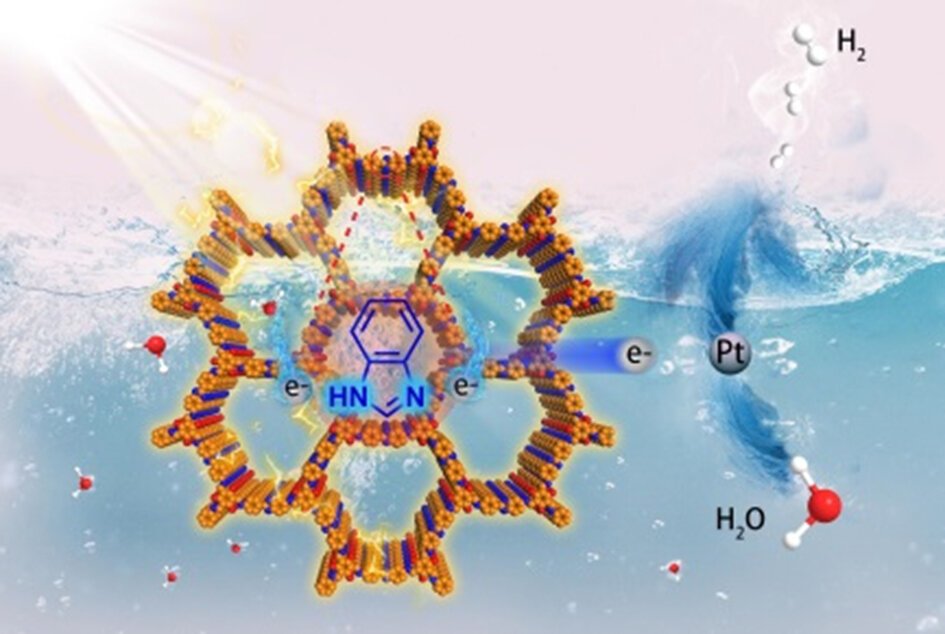Hydrogen gas (H2) is an environmentally friendly and carbon-free fuel with a high energy density, making it a promising alternative to finite fossil fuels. One of the most attractive methods to produce hydrogen is through photocatalytic water splitting, which utilizes a semiconductor material to convert solar energy into H2.
The process of light-driven hydrogen evolution reaction (HER) involves several steps, including capturing light, separating and transporting charges, and reducing protons on the catalyst surface. However, the slow reduction of protons poses a challenge, as it takes longer compared to the quick relaxation of the photoexcited state back to its ground state. To improve HER efficiency, it is crucial to generate a sufficient number of long-lived electrons and efficiently transport them to the catalytic sites.
Recently, a research team led by Prof. Yu Zhou and Prof. Jun Wang from Nanjing Tech University in China has made significant progress in this area. They successfully constructed a highly active covalent organic framework (COF) using an unconventional benzimidazole monomer in a microwave-assisted solvothermal process. Their findings have been published in the Chinese Journal of Catalysis.
Co-catalysts are commonly employed in HER to enhance the transfer of electrons to protons. COFs are excellent candidates for stabilizing and optimizing the efficiency of co-catalysts, particularly noble metals like platinum (Pt) in the form of single atoms. Researchers have employed various strategies such as pre-designation, post-modification, and hybridization with other materials to develop COF-based photocatalysts for HER.
However, the function of COFs heavily relies on the building blocks used, making the synthesis and modulation of their structures through monomer designation critical. While COFs have traditionally been synthesized using highly symmetrical and rigid building blocks, incorporating asymmetric monomers can significantly expand the variety, physicochemical properties, and functionalities of COFs. Nevertheless, synthesizing COFs with asymmetric monomers poses a challenge due to the mismatch between the crystal’s isotropy and the monomer’s anisotropy. Although COFs containing asymmetric monomers have been explored in gas adsorption and fuel cell applications, their potential in photocatalysis and metal-supported catalysts, especially monoatomic catalysts, has yet to be realized.
In the study, the researchers utilized single-atom Pt sites as co-catalysts in the benzimidazole-based COF. This COF exhibited an impressive HER rate of up to 115 mmol g-1 h-1 and a turnover frequency of 4475.1 h-1 under visible-light irradiation. The superior performance was attributed to the combined effects of benzimidazole moieties and the COF framework. On one hand, the COF stabilized the photogenerated electrons, prolonging their lifetime. On the other hand, the strong host-guest interaction facilitated the creation of single-atom Pt sites and accelerated electron transfer to these active sites for proton reduction.
This research highlights the potential of COF-based organic semiconductors for HER by achieving electron stabilization and efficient interfacial charge transfer. By employing a molecular-level design approach using structurally and functionally diverse asymmetric building blocks, new avenues for enhancing HER efficiency can be explored.
Source: Chinese Academy of Sciences
